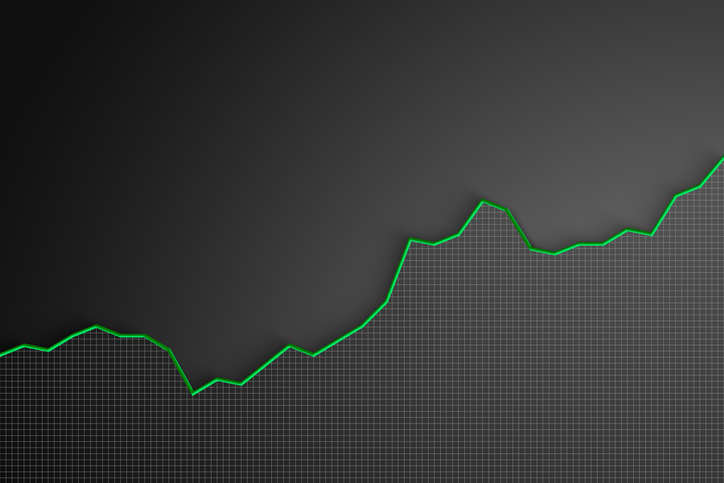Automakers Put the Great Recession in the Rearview Mirror
Sales are closing in on prerecession highs, as shoppers flock to showrooms and dealers roll out hot new models.

Few sectors of the economy suffered more during the Great Recession than the auto market. Sales of cars and trucks fell by 36% from 2007 to 2009, when most consumers were far too spooked by the plunging stock market and widespread layoffs to even think about buying a new vehicle. The additional stress threw two of Detroit’s Big Three automakers, already bedeviled by high labor costs and a fleet of offerings out of sync with consumer demand, into bankruptcy. Production at many auto parts factories ground to a halt.
But a lot has changed in only a few years’ time. Since bottoming out in 2009, auto sales have been on a steady rebound, prompting manufacturers to ramp up output and hire more workers. General Motors and Chrysler have emerged from bankruptcy protection leaner and nimbler. Profits are up industrywide. The auto industry’s turnaround has proved to be a consistent bright spot in a U.S. economy that’s still not hitting on all cylinders.
This year, dealers are on track to move 15.6 million cars and trucks, up nearly 50% from 2009, when sales hit a low of 10.6 million. And the momentum is still building. In fact, 2014 figures to see sales hit 16.3 million, in line with the prerecession range of 16 million to 17 million.

Sign up for Kiplinger’s Free E-Newsletters
Profit and prosper with the best of expert advice on investing, taxes, retirement, personal finance and more - straight to your e-mail.
Profit and prosper with the best of expert advice - straight to your e-mail.
So what’s driving this remarkable recovery? The short answer: pent-up demand, from consumers who probably wanted to buy a new car several years ago but who are only now feeling secure enough about the economy and their own financial well-being to take the plunge. And even if they’re not convinced that the economy is back on sound footing, many folks have no choice but to buy; the average car on the road today is more than 11 years old — a record high. Many cars are on their last legs.
But, according to Kelley Blue Book chief economist Alec Gutierrez, surging auto sales show more than a market simply catching up on sales lost during the recession. For instance, the resurgence of large pickup trucks reflects genuine improvement in the housing market, as builders and contractors watching their order books fill up decide to update or expand their fleets.
Also, sellers are rolling out new models with lots of appeal. They sport bolder styling, more interior amenities and a host of electronic safety features that simply didn’t exist even a few years ago. Plus advances in engine and transmission technologies are enabling huge improvements in fuel efficiency, giving automakers a powerful new selling point amid stubbornly high gas prices.
Among the highly anticipated new models: Chrysler’s iconic Jeep Grand Cherokee SUV, already off to a fast start. A pair of overhauled pickup trucks from GM that boast plenty of towing and hauling prowess while eking out 23 miles per gallon on the highway. A highly acclaimed new Chevy Corvette sports car that has enthusiasts buzzing. Toyota’s long-awaited replacement of the Corolla compact this fall. And the latest iteration of Ford’s perennially best-selling F-150 pickup, due in 2014.
And, perhaps most crucially, low interest rates will continue to underpin demand. Generous lease terms and bank loan rates near historic lows means more folks will be able to swing a new car or truck, even with the average new-vehicle transaction price running at a hefty $31,500. Edmunds.com Senior Analyst Jessica Caldwell notes that the share of leases among all new-car transactions is at an all-time high of 25%.
Add up all these factors — booming demand, a slowly mending economy, a compelling product lineup, consumer-friendly financing — and you have the equation for a very healthy auto market. And with none of those tailwinds likely to wane anytime soon, this is a comeback story that still has plenty of room to run.
Get Kiplinger Today newsletter — free
Profit and prosper with the best of Kiplinger's advice on investing, taxes, retirement, personal finance and much more. Delivered daily. Enter your email in the box and click Sign Me Up.

Jim joined Kiplinger in December 2010, covering energy and commodities markets, autos, environment and sports business for The Kiplinger Letter. He is now the managing editor of The Kiplinger Letter and The Kiplinger Tax Letter. He also frequently appears on radio and podcasts to discuss the outlook for gasoline prices and new car technologies. Prior to joining Kiplinger, he covered federal grant funding and congressional appropriations for Thompson Publishing Group, writing for a range of print and online publications. He holds a BA in history from the University of Rochester.
-
 Stock Market Today: Stocks Soar on China Trade Talk Hopes
Stock Market Today: Stocks Soar on China Trade Talk HopesTreasury Secretary Bessent said current U.S.-China trade relations are unsustainable and signaled hopes for negotiations.
By Karee Venema
-
 2026 Disney Dining Plan Returns: Free Dining for Kids & Resort Benefits
2026 Disney Dining Plan Returns: Free Dining for Kids & Resort BenefitsPlan your 2026 Walt Disney World vacation now. Learn about the returning Disney Dining Plan, how kids aged three to nine eat free, and the exclusive benefits of staying at a Disney Resort hotel.
By Carla Ayers
-
 The Economic Impact of the US-China Trade War
The Economic Impact of the US-China Trade WarThe Letter The US-China trade war will impact US consumers and business. The decoupling process could be messy.
By David Payne
-
 AI Heads to Washington
AI Heads to WashingtonThe Kiplinger Letter There’s big opportunity for AI tools that analyze MRIs and other medical images. But also big challenges that clinicians and companies will have to overcome.
By John Miley
-
 The AI Doctor Coming to Read Your Test Results
The AI Doctor Coming to Read Your Test ResultsThe Kiplinger Letter There’s big opportunity for AI tools that analyze CAT scans, MRIs and other medical images. But there are also big challenges that human clinicians and tech companies will have to overcome.
By John Miley
-
 The New Space Age Takes Off
The New Space Age Takes OffThe Kiplinger Letter From fast broadband to SOS texting, space has never been more embedded in peoples’ lives. The future is even more exciting for rockets, satellites and emerging space tech.
By John Miley
-
 Rising AI Demand Stokes Undersea Investments
Rising AI Demand Stokes Undersea InvestmentsThe Kiplinger Letter As demand soars for AI, there’s a need to transport huge amounts of data across oceans. Tech giants have big plans for new submarine cables, including the longest ever.
By John Miley
-
 What DOGE is Doing Now
What DOGE is Doing NowThe Kiplinger Letter As Musk's DOGE pursues its ambitious agenda, uncertainty and legal challenges are mounting — causing frustration for Trump.
By Matthew Housiaux
-
 A Move Away From Free Trade
A Move Away From Free TradeThe Letter President Trump says long-term gain will be worth short-term pain, but the pain could be significant this year.
By David Payne
-
 Trump’s Whirlwind Month of Crypto Moves
Trump’s Whirlwind Month of Crypto MovesThe Kiplinger Letter The Trump administration wants to strengthen U.S. leadership in the cryptocurrency industry by providing regulatory clarity.
By Rodrigo Sermeño